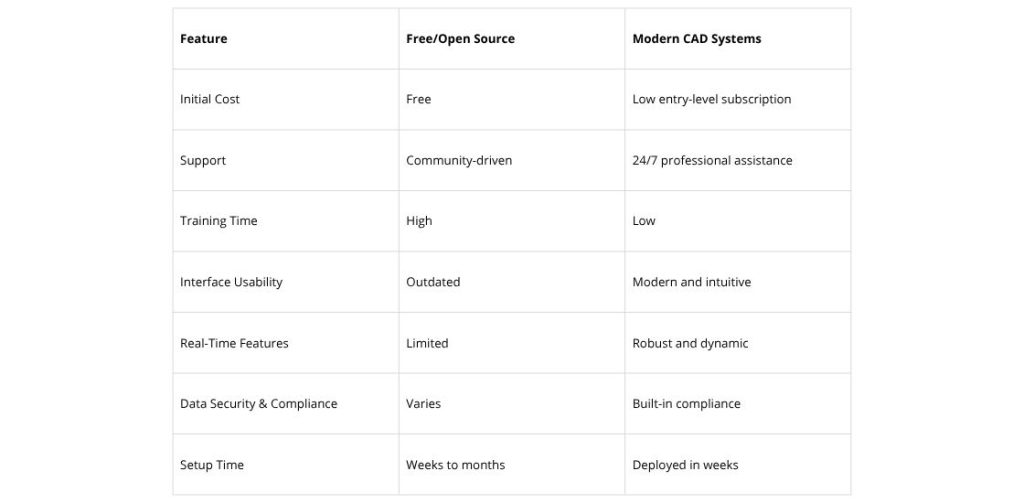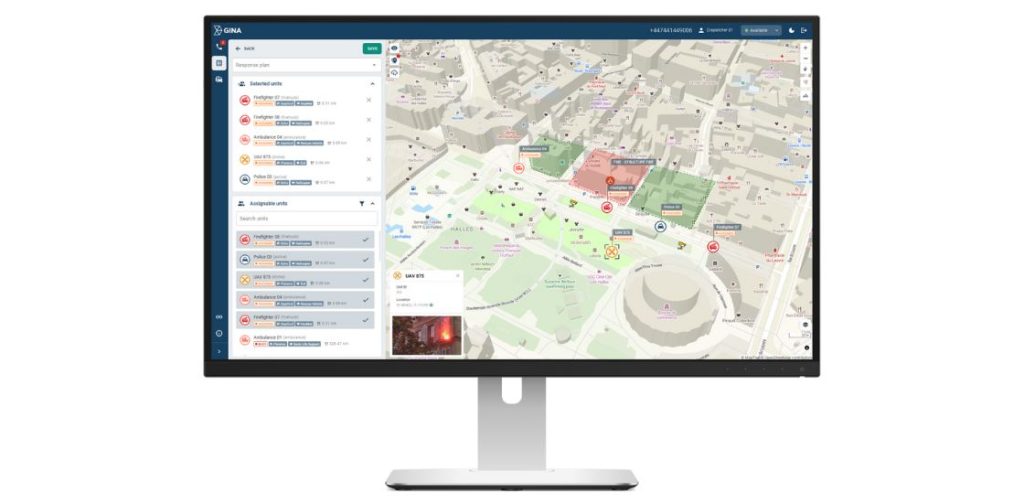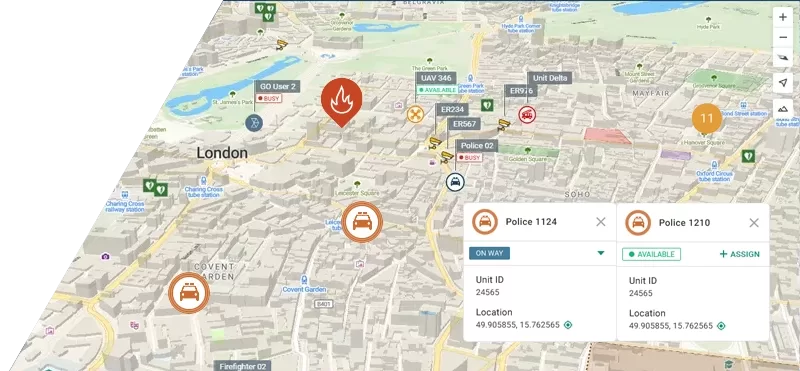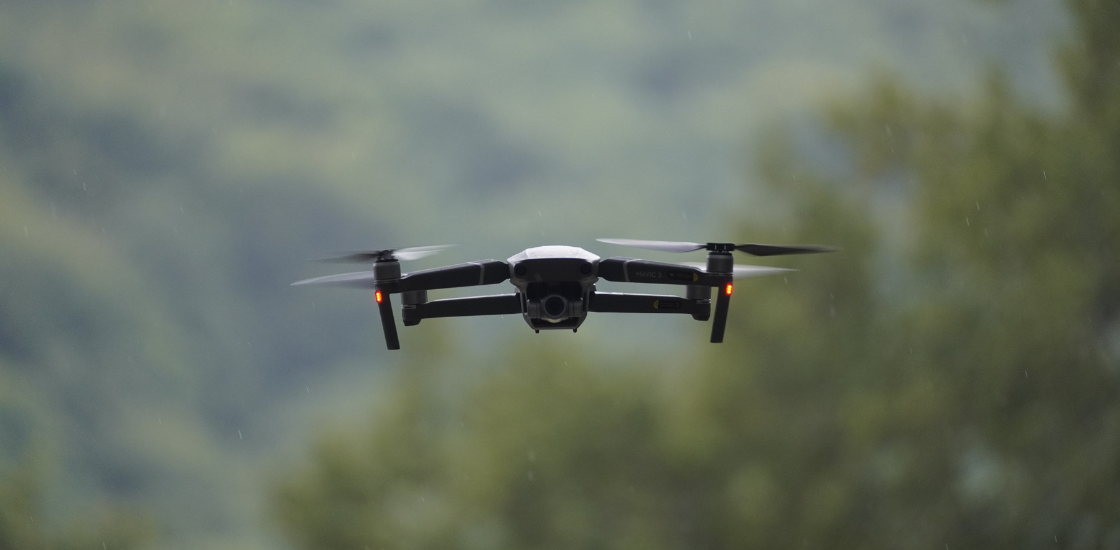Table of contents
What Is Free Ambulance Dispatch Software?
Why Free Doesn’t Always Mean Cost-Effective
The Smarter Alternative: Invest in Modern CAD
Free Ambulance Dispatch Software vs. Modern Dispatch Solutions
When Free Ambulance Dispatch Software Makes Sense
Scaling Responsibly: A Long-Term View
What Is Free Ambulance Dispatch Software?
Free Ambulance Dispatch Software refers to open-source or no-cost platforms that offer basic dispatching features. These typically include:
- Call logging
- Basic mapping or GPS tracking
- Manual unit assignment
- Simple reporting
Open-source options are often maintained by developer communities and made available at no cost to the user. While they may in some way work for small, low-volume EMS organizations, they come with important trade-offs.
Why Free Doesn’t Always Mean Cost-Effective
Despite zero licensing fees, free solutions can carry hidden costs that impact your operation’s performance and reliability. These include:
1. Complex Setup and Configuration
Many free dispatch platforms require manual server setup, database management, and ongoing updates—often without professional support. This means longer deployment times and more room for critical errors.
2. Minimal User Support
With no dedicated customer service, you’re often left to navigate forums or old documentation to resolve issues. This can delay emergency responses and compromise data accuracy.
3. Outdated User Interfaces
Older open-source software tends to have clunky, non-intuitive interfaces. This increases training time and risks dispatch errors under pressure.
4. Security Gaps
Ambulance services manage sensitive data protected by regulations like HIPAA. Many free systems lack encryption or secure user access features, opening your agency to liability.
The Smarter Alternative: Invest in Modern CAD
Computer-Aided Dispatch (CAD) systems have evolved. Modern CAD platforms offer intuitive, cloud-based interfaces, mobile accessibility, and robust compliance—often at a price even small EMS providers can afford.
Benefits of Modern Ambulance Dispatch Software
- Minimal Training Required: User-friendly design means your staff can be trained quickly and with minimal disruption.
- Fast Deployment: Web-based CADs can be deployed in hours, not weeks.
- Cost-Effective Plans: Tiered pricing models now make professional solutions accessible to even the smallest EMS organizations.
- Advanced Features: Enjoy real-time mapping, incident analytics, and seamless integration with mobile units.
- Data Security: Get encryption, role-based access, and full regulatory compliance out of the box.
Free Ambulance Dispatch Software vs. Modern Dispatch Solutions

When Free Ambulance Dispatch Software Makes Sense
There are valid use cases for Free Ambulance Dispatch Software, including:
- Volunteer EMS units with limited calls
- Temporary stop-gap during system transition
- Pilot testing before scaling operations
In these scenarios, free tools can offer a basic starting point. But as operations scale or complexity increases, the benefits of investing in modern dispatch solutions quickly outweigh the savings.
Spotlight on Smart CAD: A Smarter Alternative to Free Ambulance Dispatch Software
As many EMS providers weigh the pros and cons of Free Ambulance Dispatch Software, it’s essential to explore advanced options that combine affordability with innovation. One standout in this space is Smart CAD—a modern, cloud-based Computer-Aided Dispatch solution purpose-built for emergency medical services.

Designed for Real-World Emergency Response
Unlike many open-source tools that struggle with clunky interfaces or outdated features, Smart CAD offers a streamlined, intuitive dashboard that keeps dispatchers focused and efficient. The system supports real-time GPS tracking, unit status monitoring, and smart routing—features that directly enhance response times and coordination.
Minimal Training, Maximum Performance
One of the key limitations of most Free Ambulance Dispatch Software options is the steep learning curve. Smart CAD breaks this barrier with an easy-to-use interface that requires minimal onboarding. Dispatchers can be fully trained in hours, not weeks, reducing downtime and accelerating readiness.
Fast Deployment with No IT Headaches
Smart CAD is fully cloud-based, meaning there’s no need to invest in expensive servers or undergo lengthy installations. It can be deployed within a day, allowing ambulance services to go live quickly—ideal for time-sensitive operations or agencies looking to scale fast.
Built-In Security and Compliance
Whereas free systems may overlook critical data protections, Smart CAD is engineered with compliance in mind. With end-to-end encryption, secure login protocols, and HIPAA-aligned data handling, it helps agencies stay legally and ethically protected without adding complexity.
Scalable and Cost-Efficient
Smart CAD’s pricing is designed for flexibility. Whether you’re a small-town EMS team or a large metropolitan service, the platform adapts to your needs and budget. This makes it a sustainable alternative to Free Ambulance Dispatch Software—one that offers long-term value and performance without draining resources.
Scaling Responsibly: A Long-Term View
Choosing your dispatch software isn’t just a budget decision—it’s a strategic one. Today’s affordable and scalable CAD platforms mean that “upgrading” no longer requires a huge capital investment. In fact, many providers find that the time saved, improved response rates, and enhanced data insights pay for the system many times over.
Final Thoughts
Free Ambulance Dispatch Software offers a functional entry point, but it may not deliver the performance and reliability that modern EMS organizations demand. Whether it’s the lack of support, security gaps, or outdated features, the limitations can become liabilities in high-pressure situations.
On the other hand, today’s modern dispatch systems are more accessible, easier to deploy, and tailored to EMS needs. With intuitive dashboards, compliance-ready security, and scalable features, they empower dispatchers and first responders to deliver the best care—faster.
If your mission is to provide life-saving service efficiently and reliably, then a modest investment in modern CAD is an investment in safety, accountability, and excellence.
FAQ
How do modern CAD systems improve emergency response times?
- Modern CAD systems offer intuitive user interfaces, real-time data integration, and scalability, allowing dispatchers and responders to make faster, more informed decisions during emergencies.
4. What should organizations consider before investing in a CAD system?
- Organizations should evaluate their specific operational needs, budget constraints, scalability requirements, and the level of support and maintenance offered by the CAD system provider.
5. Can modern CAD systems integrate with existing emergency response technologies?
- Yes, modern CAD systems are designed to seamlessly integrate with various technologies, including GIS, patient databases, and multimedia communication tools, enhancing overall operational efficiency.
6. How does investing in a CAD system contribute to cost-effectiveness in the long run?
- While the initial investment may be higher than free solutions, modern CAD systems reduce costs associated with customization, training, and maintenance over time, making them more cost-effective in the long run.










